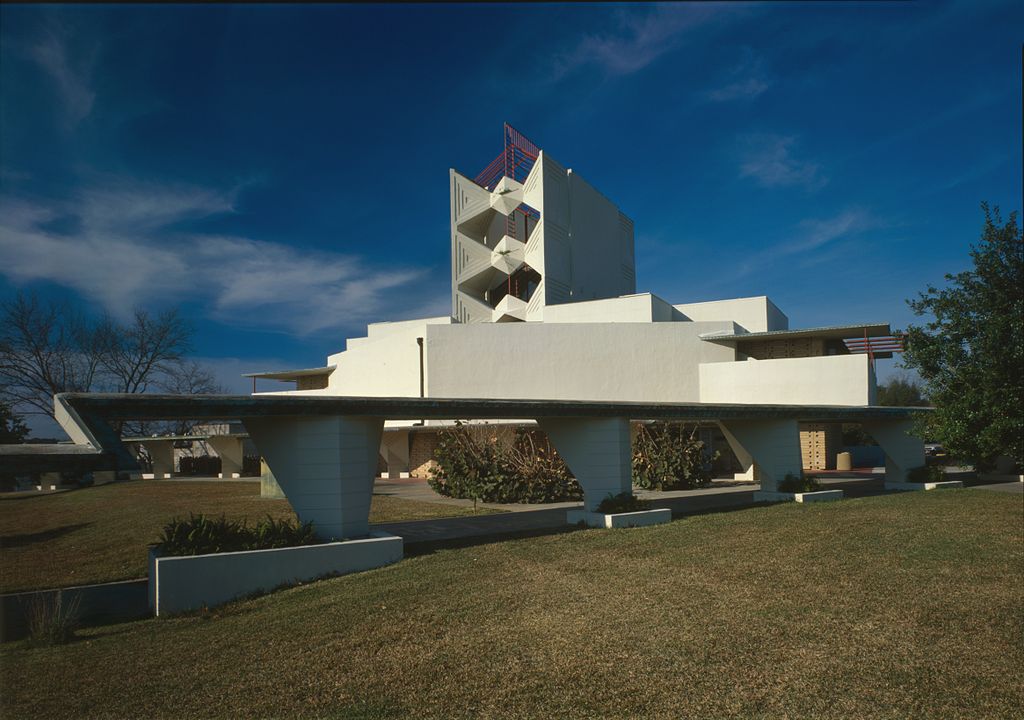Not even a decade ago, the cost to recast the handmade cement block structures of Frank Lloyd Wright’s Annie Pfeiffer Chapel on the campus of a Florida Southern College was prohibitively expensive.
But today, as 3D printing technology improves and becomes more affordable, the Annie Pfeiffer Chapel was recently restored in precise architectural detail, Design Milk reports.
The chapel was constructed using Wright’s signature textile block building system, utilizing student labor in the years between 1938 to 1941. More than 6,000 tapestry blocks decorated into 46 unique designs were individually cast from coquina and concrete.
Thanks to a $50,000 grant from the Florida Division of Historical Resources and a $350,000 grant provided by the Save America’s Treasurers Program of the National Park Service, the chapel’s splendor was restored. The Florida Southern College reports that by using 3D printers purchased with these grants, restorers were able to create molds for the intricate concrete blocks that were originally constructed by hand.
Consistent with Wright’s original design, 2,000 distinctive colored glass tiles were created and inserted into the manufactured blocks.
Learn more on the chapel’s restoration and see the equipment in action at Florida Southern College news.
Related Stories
| May 17, 2013
40 Under 40 winners: Meet the architects
Of the up-and-coming AEC professionals to be named 40 Under 40 winners by the editors of Building Design+Construction, 18 make their living in the architecture profession.
| May 17, 2013
5 things AEC pros need to know about low-e glass
Low-emissivity glasses are critical to making today’s buildings brighter, more energy-efficient, and more sustainable. Here are five tips to help AEC professionals understand the differences among low-e glasses and their impact on building performance.
| May 17, 2013
University labs double as K-12 learning environments
Increasingly, college and university research buildings are doing double duty as homes for K-12 STEM programs. Here’s how to create facilities that captivate budding scientists while keeping faculty happy.
| May 17, 2013
LEED v4 has provision to reduce water use in cooling towers
The next version of the U.S. Green Building Council's LEED rating system will expand water-savings targets to appliances, cooling towers, commercial kitchen equipment, and other areas.
| May 16, 2013
Chicago unveils $1.1 billion plan for DePaul arena, Navy Pier upgrades
Hoping to send a loud message that Chicago is serious about luring tourism and entertainment spending, Mayor Rahm Emanuel has released details of two initiatives that have been developing for more than a year and that it says will mean $1.1 billion in investment in the McCormick Place and Navy Pier areas.
| May 16, 2013
Michael R. Bohn named Executive VP at Gilbane
Gilbane has promoted Michael R. Bohn to executive vice president. With over 28 years of service to the company and leadership roles on such high-profile projects as the University of Michigan Biomedical Science Building and the University of Chicago Medical Center, Bohn will now have responsibility for Gilbane’s New York and Midwest business units.
| May 15, 2013
Schneider Electric announces Global Xperience Efficiency Events for 2013
Schneider Electric’s Xperience Efficiency series will begin with events in the United States, China, Colombia, Brazil and Russia.
| May 15, 2013
Center for Green Schools, Architecture for Humanity release new tool for green schools
The 70-page guide demystifies the processes of identifying building improvement opportunities and finance and implementation strategies.
| May 14, 2013
Paints and coatings: The latest trends in sustainability
When it comes to durability, a 50-year building design ideally should include 50-year coatings. Many building products consume substantial amounts of energy, water, and petrochemicals during manufacture, but they can make up for it in the operations phase. The same should be expected from architectural coatings.

















